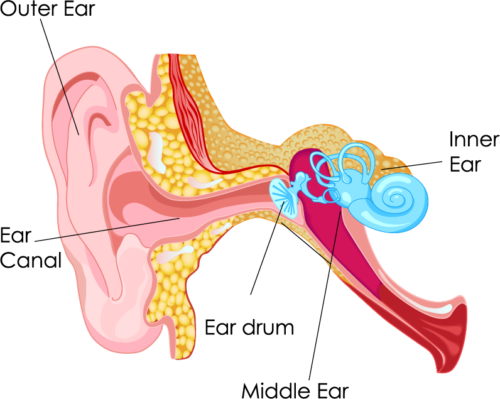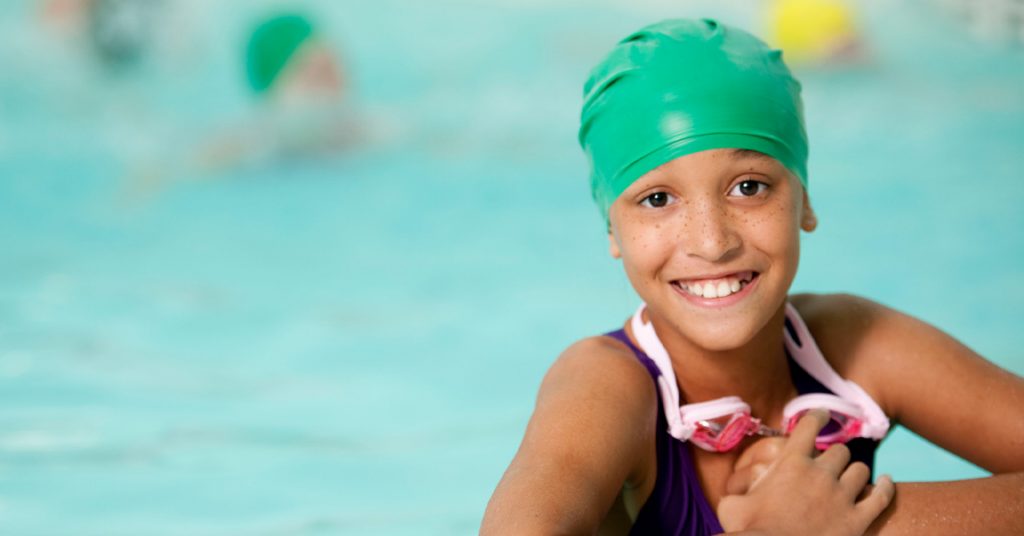When the heat waves hit, Minnesota families head to the pool or lake to cool off. This summer, take steps to avoid swimmer’s ear, and a whole lot of discomfort.
Swimmer’s ear, and the more technical term, acute otitis externa (AOE), is the irritation or inflammation of the outer part of the ear canal and external ear caused by infection. The infection is, as you may guess, associated with spending time in the water. Surprisingly, water can break down the skin lining in the ear canal making it susceptible to any bacteria and germs in the water.
While swimmer’s ear is more common among children, it is not the same as common childhood ear infections which are infection of the middle ear canal.

Symptoms of swimmer’s ear
- Pain
- Itching and irritation
- Redness and swelling
- Hearing loss due to swelling of the ear canal
- Tenderness
- A feeling of fullness in the ear
- Swelling
- Drainage
Risk factors for swimmer’s ear
Risk factors for swimmer’s ear, as the name implies, include swimming. This is especially true when water is likely to be contaminated with high bacterial levels. In addition, over-cleaning, scratching or scraping the ear canal (with cotton swabs, for example) can increase susceptibility to swimmer’s ear, as can conditions that trap water including excessive ear wax or extended use of a swim cap. Other contributing factors may include skin conditions such as eczema and psoriasis, small ear canals, and the use of hearing aids or ear buds.
Treating swimmer’s ear
Painkillers such as acetaminophen can relieve discomfort on a short-term basis. While outer ear infections may heal on their own without treatment, ongoing infections can do damage to the ear canal and eardrums so it is important to monitor symptoms closely. As such, medical treatment should be sought out if a fever develops or if symptoms last for more than 48 hours.
Antibiotic eardrops are the most common treatment for an outer ear and can be prescribed by Oakdale ENT. In some cases, our physicians may prescribe antibiotic drops mixed with steroids to reduce swelling in the ear canal.
Swimmer’s ear occurs fairly often in children and teenagers, especially those who swim regularly. Cases are typically acute (not chronic) and respond to treatment in one to two weeks. Chronic swimmer’s ear occurs when the condition isn’t resolved easily or when it recurs multiple times. Oakdale ENT can work with you in cases of chronic swimmer’s ear to develop a treatment plan.
Tips to prevent swimmer’s ear
The following help reduce the risk factors for swimmer’s ear and are recommended practices for healthy ears, especially in the summer.
- Avoid rigorous cleaning inside the ear to remove ear wax
- Prevent scratching inside the ear canal
- Use earplugs while swimming and bathing
- Consider using a home remedy such as 1 drop of alcohol and 1 drop of vinegar if water clogs up the ears. The combination of two contents may reduce the occurrence of bacteria
- Avoid swimming in water that is likely to be contaminated
- Dry ears after swimming
If you or your child has symptoms of swimmer’s ear that last for more than 48 hours, schedule an appointment to see one of our physicians.
